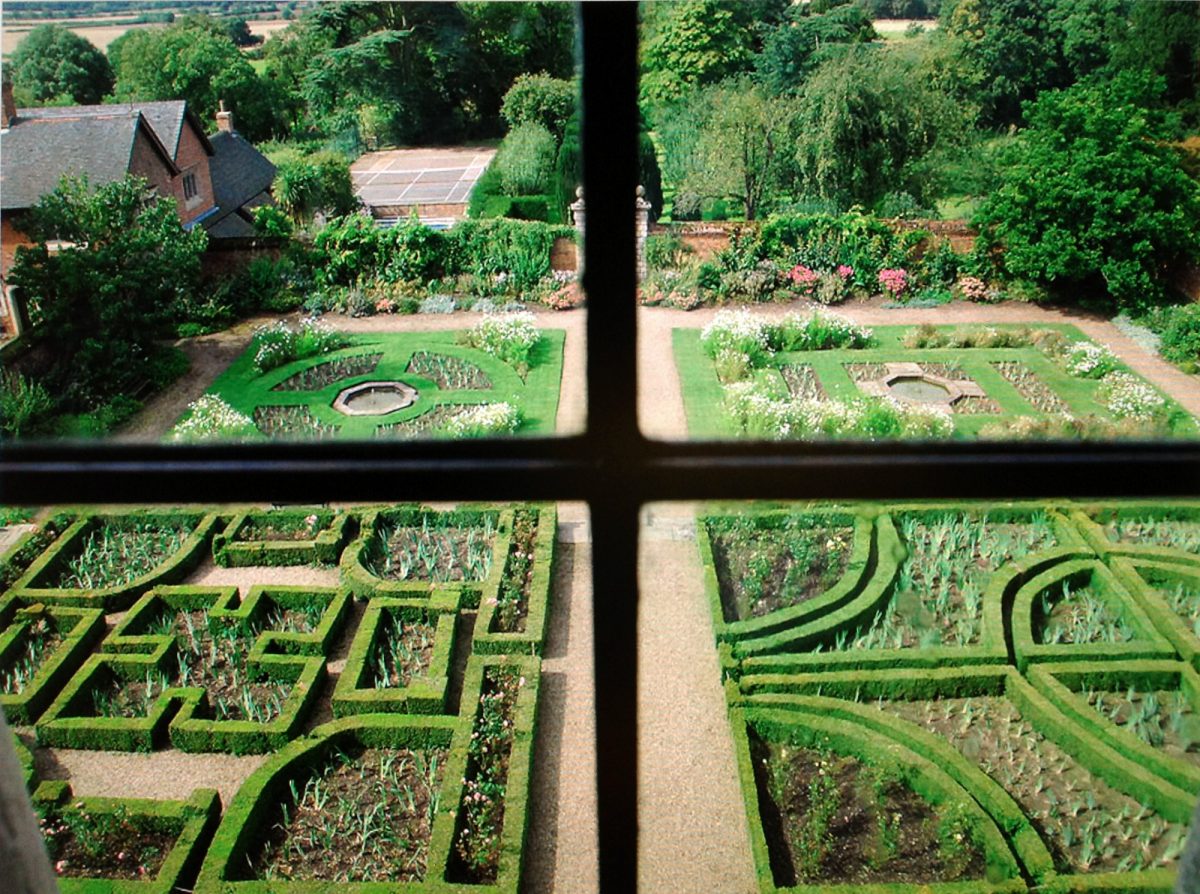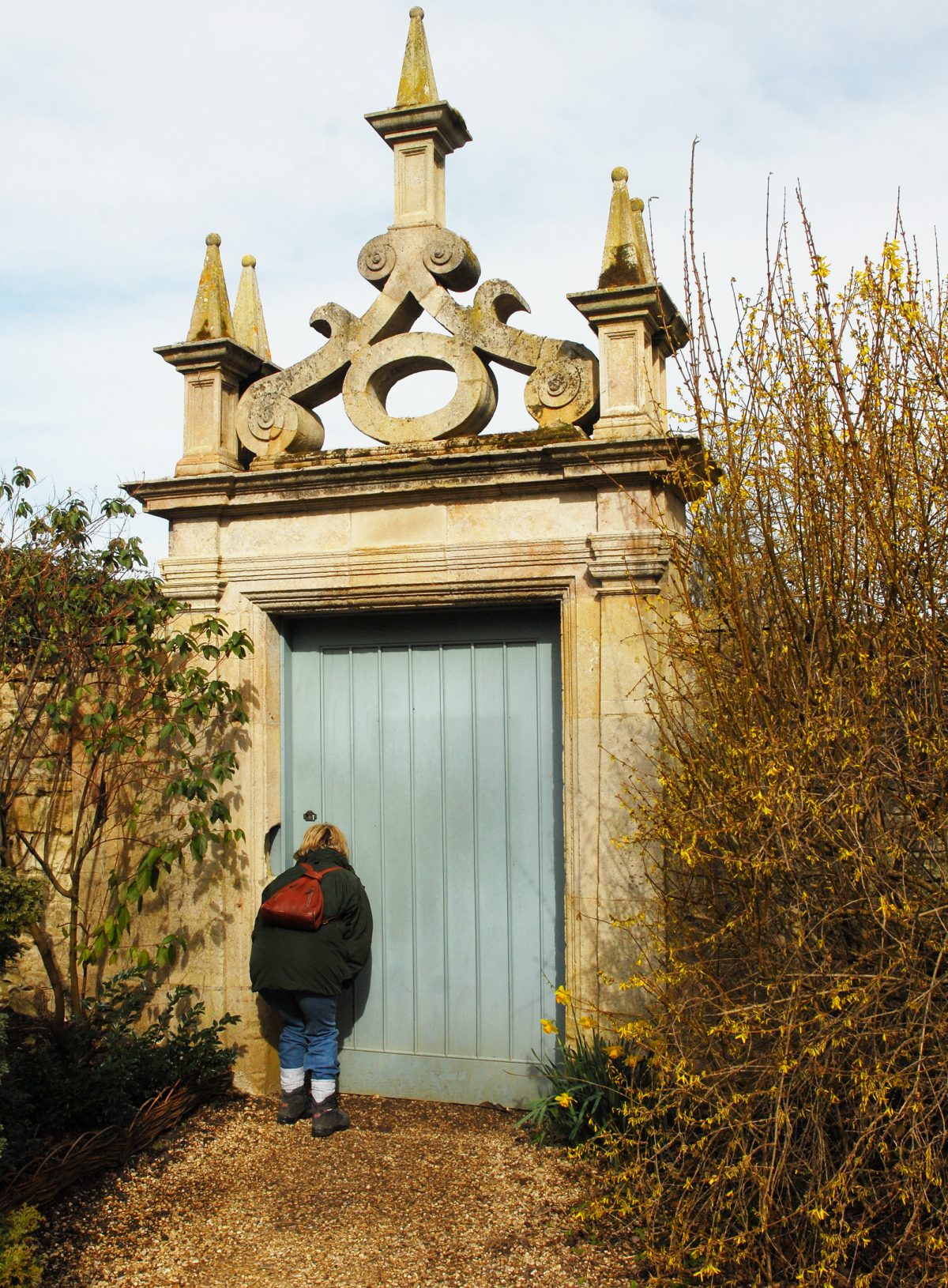16C Elizabethan Gardens – Knot Gardens
16C Elizabethan Gardens – Knot Gardens
An intricate parterre or ‘knot-garden’, edged by clipped, low box hedging, was designed to be admired from the hall windows. Most Renaissance knot gardens were composed of square compartments and contained both herbs and flowers.
Large gardens might contain six or eight compartments. first established in England in the reign of Queen Elizabeth I, Knot gardens became more and more elaborate.
Knot gardens at Doddington Hall, seen from an upper window (Image: Steffie Shields)
The West Garden at Doddington Hall (HE Grade II*) remains faithful to the 16C/17C period within Elizabethan walls, and formal entrance gates.
The ornate Elizabethan ‘David’s Gate’ in the gardens at Burghley House (HE Grade II*) possibly led to walled produce gardens. The kitchen gardens were moved in the late 18C by ‘Capability’ Brown to a new location in the park nearer the Great North Road.
Elizabethan ‘David’s Gate’ in the gardens at Burghley House (Image: Steffie Shields)


